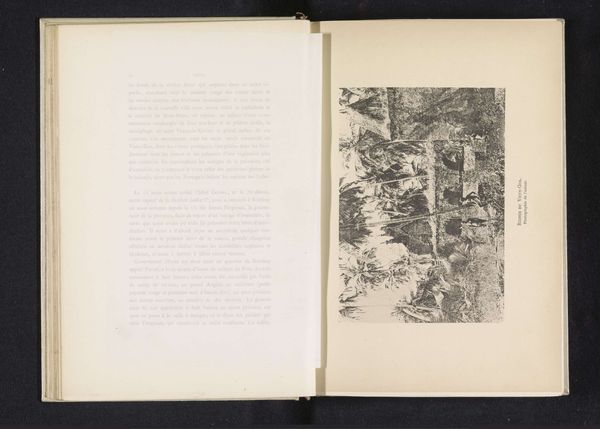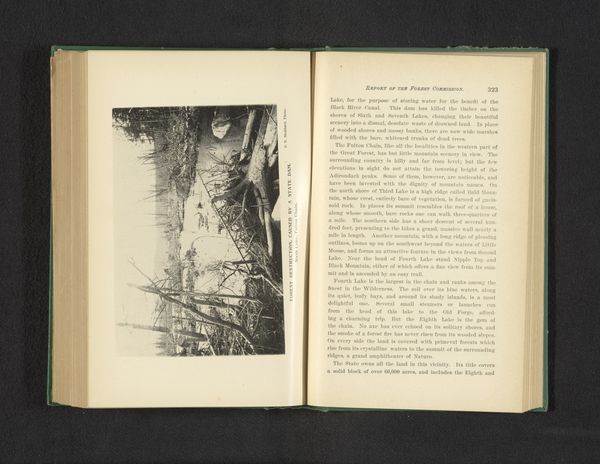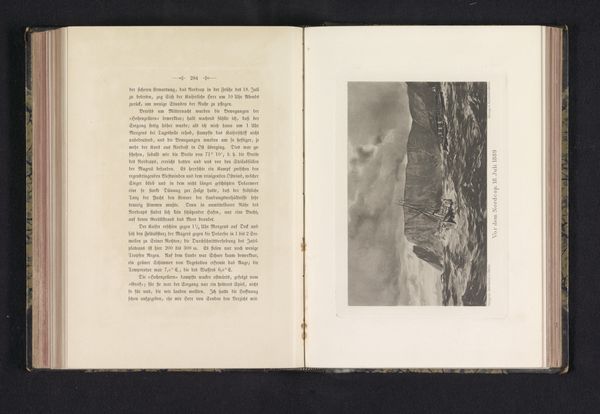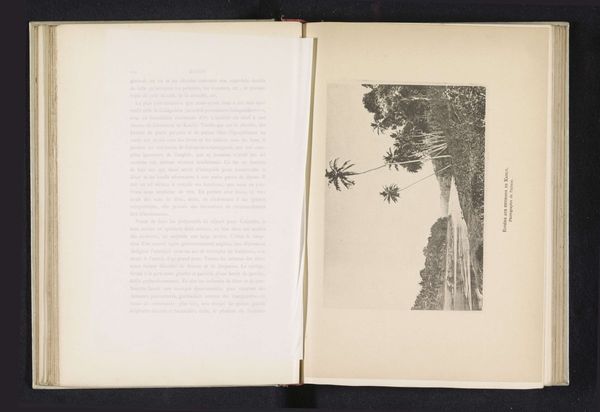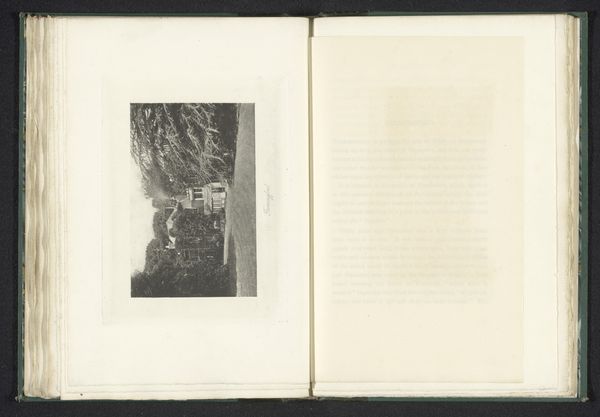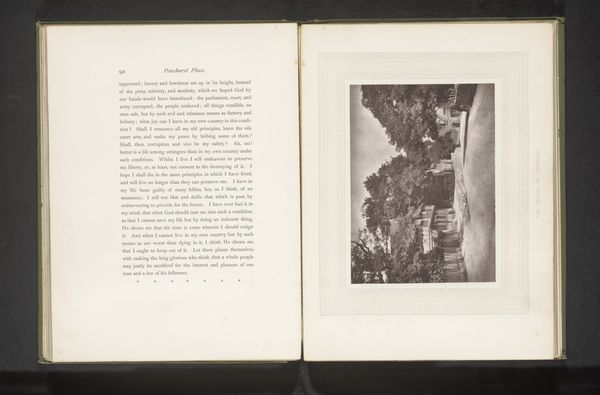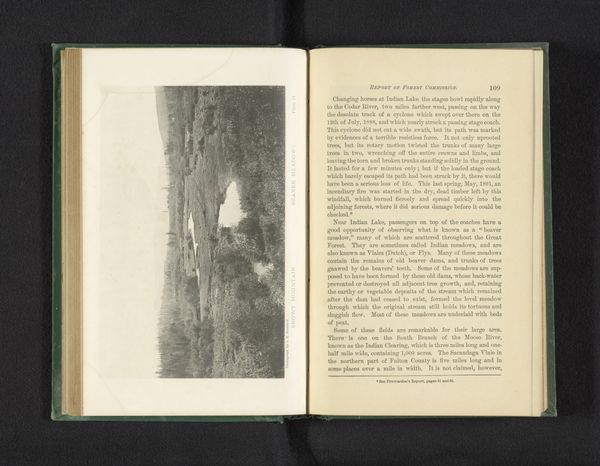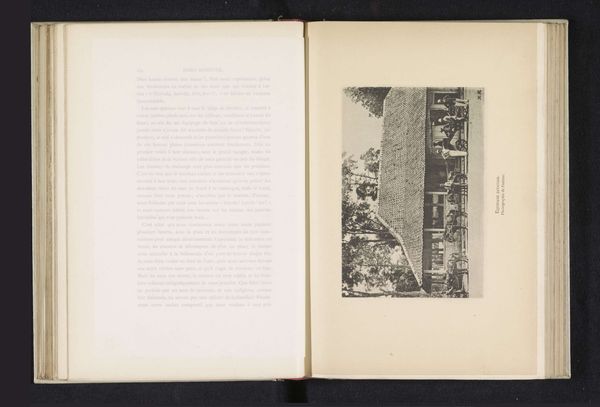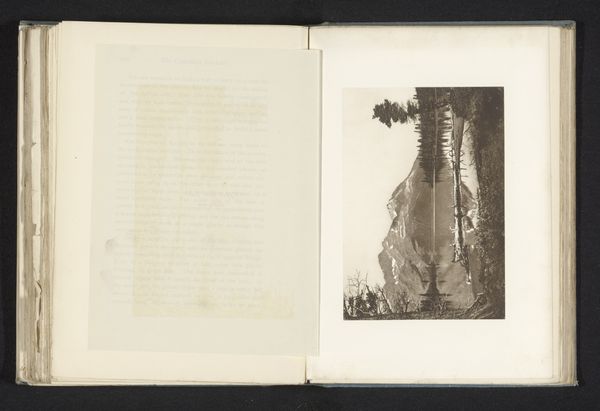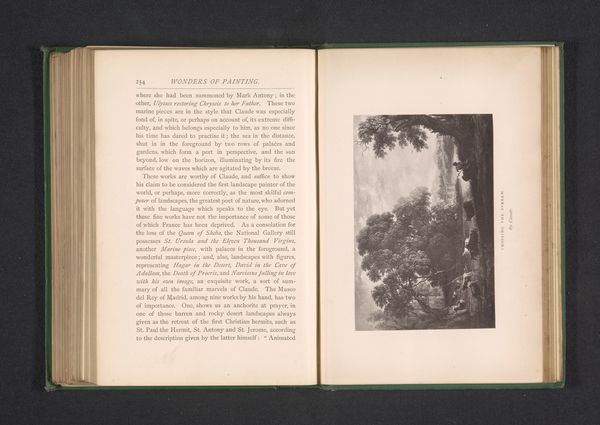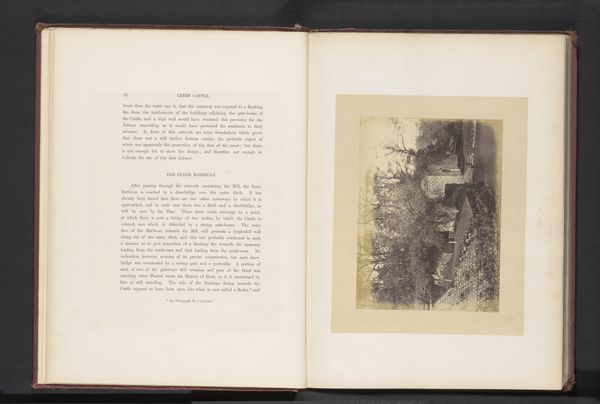
Gezicht op het toegangsportaal van het mausoleum van Yongle te Peking before 1883
0:00
0:00
tempera, print, photography, architecture
#
tree
#
aged paper
#
script typography
#
tempera
# print
#
asian-art
#
hand drawn type
#
landscape
#
photography
#
personal sketchbook
#
hand-drawn typeface
#
thick font
#
delicate typography
#
thin font
#
architecture
#
historical font
#
small font
Dimensions: height 113 mm, width 168 mm
Copyright: Rijks Museum: Open Domain
Editor: This photograph, taken by Hugues Krafft before 1883, depicts the entrance to the Yongle Mausoleum in Peking. It's striking how the texture of the aged paper contrasts with the architectural precision. What can you tell me about this image? Curator: Well, looking at this as a materialist, it's impossible to ignore the print itself. Photography, even then, involved complex processes. We have to consider the labour involved, not only in Krafft’s photographic work, but also the making of the photographic paper. It’s also fascinating how the printed image mimics the clean lines of architecture with different kinds of text surrounding it. Do you think the visual precision in the architectural picture echoes anything happening on the page next to it, which seems to feature looser text? Editor: I didn’t see it at first but yes, there's the printed text facing the picture. So there's some writing describing the photograph next to it. Are you suggesting there’s meaning to be found in the comparison? Curator: Absolutely. Think about the materials required to create this book, the labour behind crafting both the text and the image, and their distribution. This isn't just a pretty picture; it's an object of production and consumption, reflecting social structures of the time. The aesthetic itself even presents an economy of work, like a division of intellectual labour. How would an artisan looking at this in the late 19th century feel about this image compared to the patrons who consumed this book? Editor: So by examining the materials and processes, we can uncover deeper social and historical meanings within the artwork. Curator: Exactly. And consider the consumption, what did the viewers expect from an image like this? This photograph presents not just a mausoleum, but a whole system of labour and societal relationships. Editor: It gives a whole new perspective. Thanks!
Comments
No comments
Be the first to comment and join the conversation on the ultimate creative platform.
